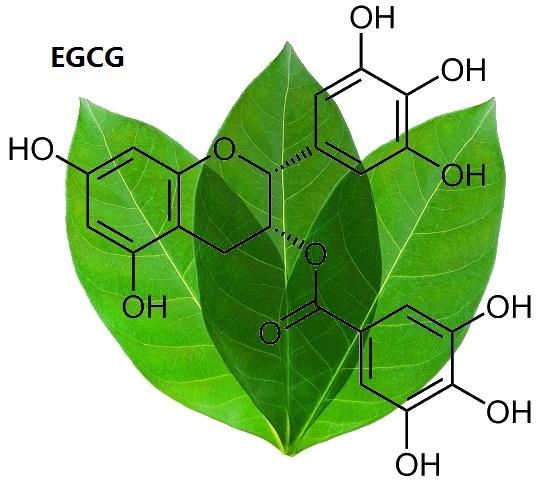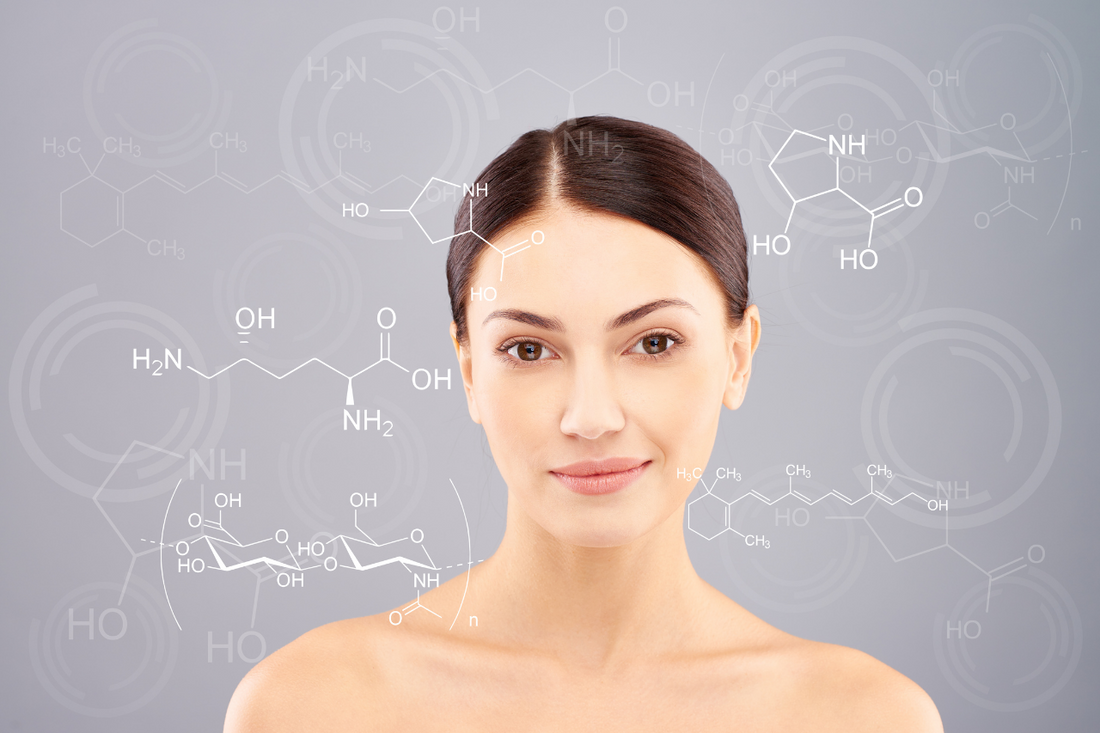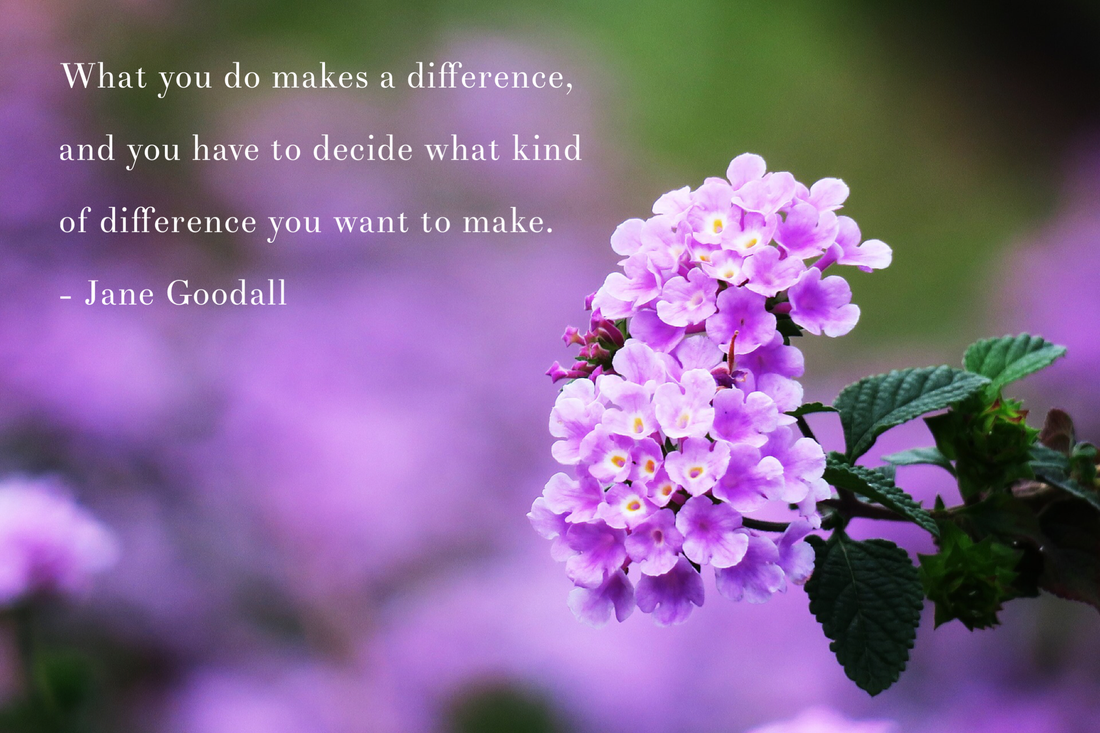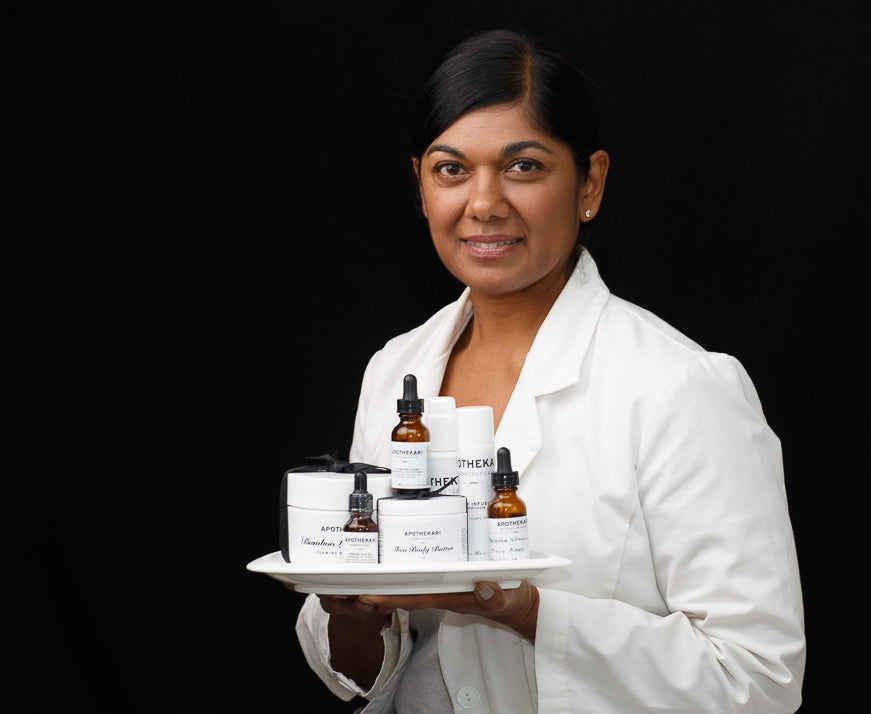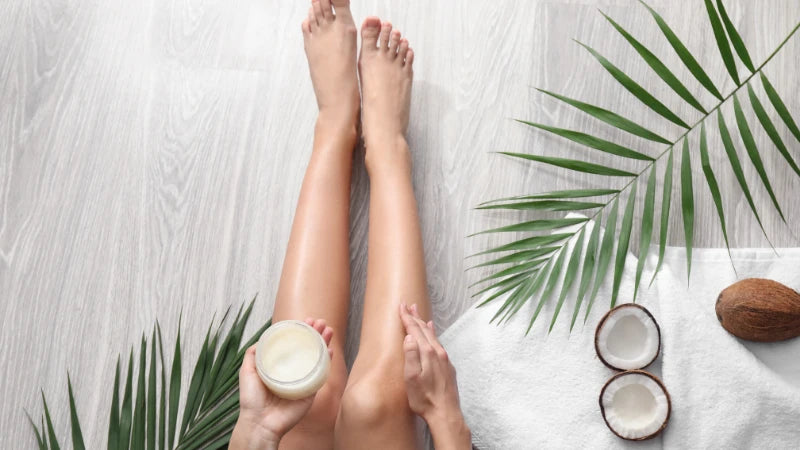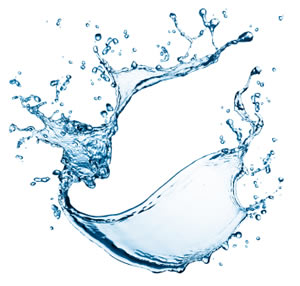Blog
Benefits of Green Tea EGCG: New Study
It’s well known that green tea, and more specifically, one of its active components, EGCG (Epigallocatechin-3-gallate) delivers a myriad of benefits to skin. Green Tea Skin Benefits Green tea itself contains polyphenols, high antioxidant nutrients which help to protect the skin against free radical damage. Studies have shown that it also: Protects against the development of skin cancer Reduces sebum production, thereby minimizing the development of acne Minimizes rosacea Slows down the skin aging process. New Study on EGCG in Green Tea A study recently published in the International Journal of Molecular Sciences, points to new skin care benefits attributed to EGCG. According to the article, the benefits extended beyond that of its antioxidant and inflammatory properties and showed that it contributed to an increase in skin hydration. The authors examined EGCG’s effect on hyaluronic acid synthase (HAS) and hyaluronidase (HYAL) gene expression, as well as antioxidant and anti-pigmentation properties. Benefits of EGCG for Skin Care EGCG was shown to increase the expression of skin’s natural moisturizing factor-related genes, among other activities. In addition, its antioxidant activity helped to prevent radical-evoked apoptosis (cell death) and it reduced melanin secretion. The study results suggest that EGCG could be used as a cosmetic ingredient for skin hydration, moisture retention and the prevention of wrinkle formation. Our customers are on to something as they already rave about the results they are seeing upon using our Bespoke Vitamin C Serum (which contains green tea extract along with L-ascorbic acid and other skin beneficial ingredients). Given these latest results, it’s not surprising at all!
Learn moreDairy Face
Dairy Face is a term coined by a UK Naturopath—and, it’s been making the waves over the past few years. The thinking is that your skin is related to your digestive health, so you might see certain parts of your face reacting to stress in your gut, depending on the types of food or drink you are intolerant to, in this case dairy. Shop All Apothekari In previous posts, we’ve discussed Other “faces” described by the naturopath: Gluten Face – Characterized by a range of symptoms including psoriasis, eczema, acne or dry skin. Sugar Face – Sugar consumption reacts with proteins, creating elements called advanced glycation end-products (AGEs) leading to skin that appears wrinkles, saggy and gaunt. Wine Face – Typically associated with individuals who consume one or two glasses of wine or other alcohol most nights of the week, skin becomes dehydrated, making fine lines and wrinkles look worse. The face may become red and make the individual appear older. Is Dairy Face Real? Your skin reacts to what you put inside your body, and in some cases—especially if you are sensitive or allergic to a specific food—your diet can wreak havoc on your skin. When it comes to dairy face, milk, cheese, and other dairy products could possibly be the main culprits for several unwanted changes to your skin: Swollen eyelids Bags and under eye dark circles Small white spots and Bumps on the chin. It’s thought that lactose—the sugar found in dairy products—intolerance contributes to the cause. An intolerance can affect the immune system leading to inflammatory responses in the body. So the result is puffy eyes and under eye bags. Dairy is also thought to increase the production of sebum (oily secretions) leading to acne. Additionally, hormones in milk may result in more inflammation including premature skin aging. How Long Does It Take to Get Rid of Dairy Face? If you suspect you may have Dairy Face, consider that your milk or cheese addiction may be the cause. You can try cutting out dairy entirely, as many people do. There aren’t any major risks associated with eliminating dairy from your diet as long as you follow healthy eating principles for most of the time. And calcium? The daily recommended allowance isn’t as high as many of us assume and can be obtained through eating foods such as fish, beans, kale, spinach and hummus. If you have concerns, speak to your physician.
Learn moreNew Ways to Enjoy the Spa
Who doesn’t love going to the spa? If this is one of your favourite ways to indulge, then you may want to know about new concepts that can help to take your outing up one level. Derived from the name of the town of Spa, Belgium, whose name originated in Roman times, the word spa itself denotes “fountain”. The town is famous for its natural mineral springs, and is also the location of a mineral water producer, whose mineral water is exported worldwide. Spa therapies have existed since the classical times when taking bath with water was considered as a popular means to treat illnesses. Forms of ritual purification existed among the Native Americans, Babylonians, Egyptians, Greeks, and Romans and today, this ritual carries on through the religious ceremonies of Jews, Muslims, Christians, Buddhists, and Hindus, which reflect the ancient belief in the healing and purifying properties of water. Lately, novel twists on the spa have been cropping up: 1. The Beer Spa Home to Spain’s first beer spa, the Granada Beer Spa provides beer baths to relax muscle tension, prevent skin aging, reduce stress and help eliminate toxins, according to the venue. Baths include yeast, hops, malt and cinnamon, which the skin absorbs in 20 minutes. Additionally, each bath offers beer taps on the side. The spa also offers body treatments with beer. Apparently the concept is catching on as there are plans to open locations in Madrid, Valencia and Marbella, amongst others. 2. Candy Spa This pop-up salon/spa, Sweet ReTREAT, was held in New York City on February 13th and 14th by Mars Wrigley. Inspired by the company’s chocolate and candy, the pop-up included treatments themed to their top confection brands including Dove, Twix, Skittles and Starburst. Art installations and a candy beverage bar were part of the event. The bonus? It was all free! If you missed the pop-up this year, you can keep your fingers crossed that the company will host another one next year. 3. Gin Spa Only in Britain! Located in Glasgow, Scotland, the Gin Spa brings together a deep understanding and knowledge of gin botanicals, with a focus on crafting superb customer experiences. Treatments include massages, facials and nails and a gin cocktail is included with each treatment. 4. Salt Spa Set to open soon, Speleos Salt Spa, North Hampton will focus on halotherapy, or using salt for therapeutic purposes.The spa will use active and passive forms of halotherapy alike, and will utilize a halo generator to crush pharmaceutical grade salt. Spa going, for me, is a special occasion thing. I’ve yet to try any of the four listed above, but two that I’ve been to most recently include: Spa Scanidave. A traditional Scandinavian baths experience set in a spruce and cedar forest in the mountains. Focusing on hydrotherapy, one can indulge in a range of hot and cold water treatments – steam baths, saunas, Nordic waterfall and showers, cold plunge baths and solariums and outdoor fireplaces. Absolutely magical, especially if you catch it while the snow is falling. Miraj Hammam Spa. This exotic oasis lets you indulge in traditional Middle Eastern treatments including Hammam (steam room) & Gommage (exfoliation). The experience leaves skin feeling soft and supple and you feeling most relaxed. You can even spa at home. Try incorporating Apothekari body treatments into your daily routine for an indulgent experience that won’t break the bank. Do you do spa?
Learn moreHyaluronic Acid Love
When it comes to effective skin care ingredients, hyaluronic acid skin care products (along with related sodium hyaluronate) rank right up there with other superstars including l-ascorbic acid, retinoids and sunscreen. This naturally occurring substance is a carbohydrate that is found in our joints, our eyes and connective tissue, along with our skin. It helps to lubricate things and also has an immense capacity to attract and hold large quantities of moisture. It can do this without the skin receiving too much water, which can be just as bad for skin as too little. Aging skin loses its ability to maintain moisture, resulting in the visible loss of firmness, pliability, and plumpness. Hyaluronic acid acts as a humectant (attracts moisture from the environment into the skin) and replenishes moisture that is essential to the appearance of younger-looking, healthy and supple skin. Other ingredients, including glycerin and propanediol also do this, but hyaluronic acid is far more effective, capable of holding 1000 times its weight in water! The result is skin that looks and feels softer, smoother and hydrated, with a diminished appearance of fine lines and wrinkles. What about sodium hyaluronate? This salt form of hyaluronic acid also acts as a humectant but is more stable and less likely to oxidize. It also has a lower molecular size, helping it to penetrate deeper into the skin. Chemists, however, have developed low molecular weight versions, which solves this issue. The key is not to go too low with the molecular weight as this can lead to skin inflammation. Hyaluronic Acid Skin Benefits – More… You don’t need super high concentrations of either sodium hyaluronate or hyaluronic acid. Concentrations of 2% and less deliver great results so don’t be surprised to see them listed at the end of the ingredient list. Higher concentrations can conversely, dry the skin. While hydration is the main reason to incorporate hyaluronic acid, it also can: Increase skin elasticity Fight inflammation, thereby helping to soothe skin irritations such as atopic dermatitis and rosacea as well Deliver antioxidant benefits, helping to protect skin against free radical damage. Useful for all skin types, we love hyaluronic acid for its multi-tasking ability. Oily or combination skin types benefit from non-greasy hydration. Because it is so gentle, even sensitive and redness prone skin is able to tolerate it. Find it as sodium hyaluronate in our Bespoke Vitamin C 15% Serum (10% too).
Learn moreHappy International Women's Day!
Happy International Women’s Day 2018 (IWD)! Held annually on March 8th, this global day has occurred for well over a century, with the first gathering supported by over a million people in Austria, Denmark, Germany and Switzerland. IWD celebrates the social, economic, cultural and political achievements of women and the day is marked around the world with arts performances, talks, rallies, networking events, conferences and marches. IWD seems an appropriate time to celebrate all the strong, successful women we know, including the 12 women who participated in our Be Beautiful Apothekari Campaign last year. Sara – “Being beautiful is when you can express your true self – values, personality, style and whole being – without fear of repercussion or judgement. Confidence, authenticity, joyfulness and curiosity all contribute to my idea of what being beautiful is.” The theme for IWD 2018 is #PressforProgress, a nod to the growing global movement of advocacy, activism and support surrounding gender parity and sexism. Inspired by the #MeToo and #TimesUp movements, the aim of the theme is to encourage people to continue the vocal fight for equality. Not just today, but always, let’s reflect on progress made, to call for change and to celebrate acts of courage and determination by ordinary women who have played an extraordinary role in the history of their countries and communities. Seize the moment, celebrate, take action and transform women’s lives everywhere. The time is NOW.
Learn moreCosmeceutical, Defined
When it comes to skin care, you’ve no doubt come across the word, cosmeceutical. The term is being used more frequently and is a hybrid of two words – cosmetic and pharmaceutical (drug). A cosmetic is a product that enhances your beauty and appearance while a drug is something that is used to prevent or treat a disease. The word cosmeceutical was coined by Raymond Reed, founder of the U.S. Society of cosmetic chemists, in 1961 and was popularized in the 1970s to refer to cosmetic products that contain active ingredients claiming to enhance the appearance of your skin. What Are Dermaceuticals? What about dermaceutical then, as it pertains to our brand – Apothekari Dermaceuticals? Like cosmeceutical, it is a hybrid of two words – derma, derived from dermis (the dense inner layer of skin beneath the epidermis) and cosmetic. Like cosmeceutical, these two terms are often associated with skin care brands that are science based and for the most part, may be used interchangeably. In general, cosmeceuticals are non-prescription products, which are sold over the counter. Cosmeceuticals contain ingredients including retinoids, antioxidants, alpha hydroxy acids and peptides. These active ingredients are not drugs but have known physiologic effects and will improve the appearance of aging skin over time. Cosmeceuticals Can Deliver Results The words cosmeceutical or dermaceutical are not recognized legally (i.e., they are not regulated by the Food and Drug Administration, Health Canada or the European Union) so cosmetics companies must be careful in their marketing and stating of benefits because their products don’t undergo the same amount of vigorous testing that is required for drugs. While the ingredients that make up a skin care treatment may have many beneficial properties, manufacturers cannot market products with claims for purposes such as treating or preventing disease, or affecting the structure or function of the body—including the skin. These types of claims make the product a drug and then must meet the requirements for a drug. Under the law, information on cosmetic labeling, including claims, must be truthful and not misleading. What Are Cosmeceuticals Used For? If you’re shopping for a cosmeceutical, be wary of marketing hype. Ask questions and investigate the listed ingredients. Reputable companies include effective ingredients at appropriate concentrations and they don’t overstate their advantages. Cosmeceuticals are NOT magic treatments, but they can deliver a range of skin benefits including: Deliver Softer and Smoother Skin. Moisturize. Often by reducing transepidermal water loss (TWEL) thereby creating an environment for skin barrier repair. Provide an Added Skin Benefit. Novel ingredients or technology may be used: Retinoids to boost collagen and elastin production. Antioxidants to fight free radical damage. Alpha hydroxy acids to exfoliate. Since we are all different, a product that works for you, may not work for your best friend, and vice versa. The key is to finding a cosmeceutical that works for your skin type and your needs. At Apothekari, our line of scientific skin care products offers a range of cosmeceuticals designed to improve the health and appearance of your skin. What are you waiting for? Shop All Apothekari
Learn moreMorning Skin Care Vs Evening
Your skin is exposed to UV rays, pollution, dirt and makeup. You may spend a good chunk of time talking on your cell phone, exposing your face to bacteria. For this reason, a morning skin care routine should be protective, helping to defend your skin against damage. At night, once you get rid of the dirt and makeup on your face, the scariest thing you’ll have to contend with is your pillowcase so make sure to change it regularly. This is the time when your skin (and your body) goes to work in resting, repairing and prepping for the next day. Shop All Apothekari Is It Better to Do Skin Care In the Morning or Night? To support your skin during both periods, you need to look after your skin both in the morning and night. The regimens are different but they don’t need to be complicated. In this post we show you how. Why Is Skin Care Better at Night? (it’s not…) At night, focus on cleansing and nourishing your skin. Choose products, that can help your skin to repair itself and even help slow down the aging process. Here’s what to do: Cleanse. Choose a gentle formulation that won’t strip away skin’s natural oils. Depending on your skin type, opt for one that is foaming – AHA-Mazing Clean Cleansing Gel – or creamier, like our Cloud Nine Foaming Cleansing Crème. If you enjoy using cleansing oils and balms, they are an effective way to help remove make-up and can be incorporated as part of a double cleanse method by following with a foaming cleanser after. Prevent. Ingredients including peptides, retinoids and antioxidants help to boost collagen and elastin production, tell your skin cells to behave normally and combat inflammation. We consider retinoids essential to healthy and youthful skin, but they are light sensitive so should be used at night. Apothekari A is for Anti-Aging contains retinaldehyde and niacinamide to boost collagen production, brighten skin tone and reduce the appearance of wrinkles and fine lines. Treat/Correct. Whether a serum, cream or lotion, this is a good time to apply treatments that can help to fix issues unique to your skin: For extra hydration, apply a moisturizer like our Daily Infusion Moisturizer, which hydrates and plumps skin. For hyperpigmentation, apply skin lightening agents including Vitamin C, niacinamide, retinoids, etc. Yes, you can use our Bespoke Vitamin C serum at night too! For eye care, seek out formulations to help combat puffiness, dark circles and crow’s feet. Consider Apothekari Firming Eye Gel, featuring Vitamin C. For wrinkles and fine lines, the retinoid or peptide formulation used in step 2, for prevention, has you covered. For sun damage, a combination of skin lighteners/brighteners and retinoids can help to reverse the damage. For oily skin, apply exfoliating toners or serums to help manage sebum production and reduce blemishes. Is Morning Skin Care Necessary? (um, yes…) Your morning skin care routine differs from that of your evening one in a few different ways: Cleanse. (Optional) In the morning, we consider this step optional, especially if your skin is dry to normal. It’s one step that I skip and boils down to a matter of personal preference. To cleanse or not to cleanse – this one’s up to you. Protect. The sun’s UV rays are responsible for more than 85% of skin aging. For this reason, the most important skin care product you’ll ever need is sunscreen. Use it daily, year round and you’ll reap the rewards. Watch out for our Shade SPF 30 coming soon! Prevent. It’s always good to try and prevent bad things before they happen so this step focuses on just that. Antioxidants, including Vitamins A, C and E, ferulic acid, pomegranate seed oil, astaxanthin and green tea are backed by sound science to support their efficacy preventing skin damage associated with free radicals and UV rays. Antioxidants can also boost the effectiveness of your sunscreen. Apply antioxidants in the morning to battle the daily assault of pollution and ultraviolet rays and at night to help boost collagen production and fight against factors that age skin.Apothekari Bespoke Vitamin C 10% or 15% are our made to order high potency Vitamin C serums containing a range of antioxidants including L-ascorbic acid, ferulic acid, astaxanthin, pomegranate seed oil and green tea extract. It also features hyaluronic acid and propanediol to moisturize. Treat/Correct. As with your PM routine, your morning routine should incorporate treatments and ingredients that will help manage your particular skin issues. Revisit those and include them if you feel necessary. Not too complicated, I hope! Does your morning skin care routine differ from the one at night?
Learn moreCoconut Oil in Skin Care; The Good and the Bad
Is it ok to use coconut oil in skin care routines? Coconut oil is definitely having its time in the spotlight these days—whether for its lauded nutritional qualities or wellness benefits, you can’t miss its virtues being sung from the top of many rooftops. More in this post. Shop All Apothekari Coconut oil is produced by extracting the oil from the meat of mature coconuts. It has a high saturated fat content and is a darling of the ‘natural world’ whose advocates suggest we embrace it as part of our diet. However, many organizations including the World Health Organization, the United States Food and Drug Administration, American Heart Association and Dietitians of Canada advise that its consumption should be limited or avoided. The concern is that it increases both the amount of high-density lipoprotein (HDL, or good)) cholesterol and low-density lipoprotein (LDL, or bad) cholesterol, which may increase the risk of cardiovascular disease. We’ll leave the nutritionists to battle it out about the oil’s benefits and risks when it comes to your health, but when it comes to coconut oil in skin care, there are advantages. Coconut Oil In Skin Care: Bad? When it comes to skin care, many a blogger, model, and online commenter, suggest that coconut oil is an amazing do-it-all ingredient for your skin, capable of moisturizing it, cleansing it, clearing it up and delivering radiant goodness. It’s made up of medium chain fatty acids and contains vitamin E, proteins, lauric, capric and caprylic acids, which deliver anti-bacterial and anti-fungal properties and can offer skin benefits. Its high saturated fat content makes coconut oil very hydrating so dry skin types benefit quite well and it’s also been shown to soothe mild cases of eczema. Coconut oil is great for some skin types and some uses, but it’s not a cure all and it’s not for everyone. It is highly rated on the comedogenic scale, sitting at 4 on a scale of 0 – 5. This means that coconut oil can clog pores, which is problematic if you have oily or acneic skin. The comedogenic effect varies amongst individuals and it is possible for some individuals to tolerate it without any issues. Others may go for months before experiencing a breakout while it’s also possible to react almost immediately. If you want to give coconut oil a try, go slow and be prepared to drop it out of your routine if your skin doesn’t like it. Is Coconut Oil Good in Skincare Products? It’s probably best to skip coconut oil in skincare products for the face, but when it comes to body care, it’s not a bad idea at all. When applied to the body and scalp, coconut oil can be hydrating. Slather it on rough and dry feet at night and then don a pair of socks to wake up with softer, smoother tootsies by morning. You can find coconut oil in lots of body polishes and scrubs, where it’s often combined with other skin softening ingredients—it can help to elevate your bath-time routine! Are you a fan of coconut oil when it comes to skin care?
Learn moreExercise Skin. Yup, They're Related
Exercise Skin. You may not think these two things are related, but new research shows that exercise benefits not only our overall wellness but that of our skin as well. In fact, in addition to help skin look younger, it may also even reverse skin aging in people who start exercising late in life. Aging leads to many unwanted changes in our skin. Wrinkles, crow’s feet and sagging make us look older due to changes occurring within the various layers of our skin. After about the age of 40, our stratum corneum, the outermost, protective layer of skin that we can see and feel, starts to thicken. Composed mainly of dead skin cells and a little bit of collagen, it gets drier and flakier. At the same time, the dermis, located underneath the stratum corneum and epidermis, starts to lose skin cells and elasticity and begins to thin. The result is more translucent skin and often, a more saggy appearance. The changes above occur as a result of the aging process and don’t take into account general lifestyle particulars such as diet, sleep, stress or sun exposure. Are skin changes inevitable as we age? Recently, researchers investigated just this. A team at McMaster University in Ontario found that premature aging in nearly every organ in the body was completely prevented in mice that ran on a treadmill three times a week for five months. These mice were genetically engineered to age faster due to a defect in their mitochondria — the cellular powerhouses responsible for generating energy for nearly every cell in the body. Mitochondria are unique in that they have their own DNA. It has been thought that lifelong accumulation of mitochondrial DNA mutations lead to energy crisis that result in a progressive decline in tissue and organ function, ultimately resulting in aging. But the study on genetically-disadvantaged mice found those who had endurance exercise training three times a week looked as young as healthy mice while their sedentary siblings were balding, graying, physically inactive, socially isolated and less fertile. One of the lead authors of the study, Adeel Safdar, said: “I believe that we have very compelling evidence that clearly show that endurance exercise is a lifestyle approach that improves whole body mitochondrial function which is critical for reducing morbidity and mortality. Exercise truly is the fountain of youth.” Co-author Jacqueline Bourgeois said: “The recipe for healthy aging is very simple, and that’s exercise. The problem is that it is most people find it a difficult recipe to follow.” The study was taken a step further looking at people aged 65 and older. Exercise skin changes at a microscopic level were observed when exercise was introduced to participants for 30 minutes three times a week on a stationary bike – not much. To eliminate changes attributed due to UV exposure, skin that had not been frequently exposed to the sun was examined. The results? Skin appeared 20 to 30 years younger under the microscope after three months. The correlation between exercise skin is not completely clear, but researchers suspect that certain substances are also involved in the skin changes related to exercise. There’s no evidence that exercise reverses wrinkling and other damage from the sun, but it’s incredible to consider all of the ways in which exercise changes our bodies, including that of our skin. So…Get moving! Your health AND your skin will thank you.
Learn moreWater in Cosmetics – Yay or Nay?
When it comes to water in cosmetics, you’ll find this ingredient listed in every type of personal care product – lotions, cleansers, deodorants, make-up, shampoos, sunscreens, etc. Do an internet search for the use of this common skin care ingredient and you’ll find differing opinions regarding its usefulness in formulations. In this post, I’ll cover the rationale behind incorporating water in cosmetics and let you decide if it makes sense or not. Water in Cosmetics – Why? Many individuals and companies will dispute the use of water in personal care products for many reasons with the main argument being that it is a cheap filler in treatments. Yet from a formulation and benefits perspective, water is important when it comes to cosmetics for several reasons: It helps to dissolve many ingredients that are beneficial to skin. Without water, you’d have to make do without many skin beneficial ingredients or be happy with a gritty, unpleasant texture. Water aids in the formation of emulsions – preparations in which oil and water are combined together to form creams and lotions. Depending on the ratio of oil to water, these may be called oil-in-water or water-in-oil emulsions. Emulsions produce lighter feeling and less greasy textured formulations than those that contain oil alone. More water equals a lighter textured product and less results in a more heavily textured one. It helps to replenish moisture in the skin. What Type of Water Is Used in Cosmetics? The type of water in cosmetics isn’t every day, regular tap water. It has to be free of microbes, metals and particulates that not only potentially can contaminate the end product but also wreck its stability. For this reason, formulations should contain distilled or deionized water which is free from contamination. What About the Consumption of Water for Maintaining Healthy Skin? You’ll come across many recommendations advocating that the consumption of adequate water – often eight to 10 glasses per day – is the secret to radiant skin. In fact, beauty magazines and beauty bloggers never tire of this as a way to improve your skin’s appearance and even eliminate wrinkles. While nobody would dispute that adequate water intake is important for your health, there is little, if any, scientific evidence that proves drinking a lot of water has any skin benefits at all. In fact, the water you consume will reach all your organs before it gets to your skin. Our skin, via its outermost layer, the stratum corneum, is designed to prevent water loss. Yet guzzling water isn’t necessarily going to make its way to your skin. The application of topical treatments with ingredients that include occlusives (prevent water from evaporating from the skin into the environment) and humectants (draw water into the superficial layers of skin) is your better bet for efficacy. Apply a hydrating moisturizer immediately after washing, bathing or showering to help lock in the moisture. As for the consumption – go ahead. Drinking water will do your body good; just don’t expect it to transform your skin. The next time you pick up a container and read the ingredients to see water at the top, you’ll know why this skin beneficial ingredient is included. Water is included in several of our Apothekari formulations including Daily Infusion Moisturizer, our Bespoke Vitamin C Serums and A is for Anti-Aging. They are not there just for show! Shop All Apothekari
Learn moreSynthetic vs Natural Ingredients in Skin Care : 5 Things You Should Know
With a growing awareness and interest in healthy living (open to interpretation, yes!), it’s not surprising that many of you may be concerned by the use of synthetic ingredients in your cosmetics. I’m often asked if Apothekari is ‘natural’ and while we could certainly describe ourselves as a natural skin care line, it feels a bit insincere to say that because when it comes to skin care, the word natural is unregulated and very much open to interpretation. We like to focus instead on the fact that we formulate with safe and effective ingredients and that we include them at appropriate concentrations to deliver the best possible outcomes for your skin. There is a lot of fear mongering on the internet, often perpetuated by well-meaning but unqualified individuals who would like us to believe that if any ingredient is synthetic – produced in a lab – that it must be bad. And that if an ingredient is natural – coming from nature – then it must be good. The truth is that there are good and bad skin care ingredients in both the natural and synthetic camps and you shouldn’t be led into believing that one is better than the other. Here are 5 common misconceptions about synthetic ingredients and natural ingredients that you may come across: Synthetic Ingredients & Chemicals Are Bad. The truth is that everything is a chemical. WE are made up of chemicals. Something that is synthetic or a chemical isn’t necessarily bad for you or your skin. However, some ingredients, whether synthetic or natural are best avoided or used in minimal quantities. No direct relationship between the benefits and dangers of a particular chemical and its origin as a natural or man-made substance have been found. Natural Ingredients are Better for Your Skin. Whether a chemical is synthesized in a lab or obtained from nature, our bodies cannot distinguish between the two. Identical ingredients are treated and processed by our bodies in the same manner. Natural Ingredients are Better for the Planet. Not necessarily. Some plants are endangered and by continuing to harvest them, we may be putting a strain on them and their habitat. Consider the palm tree and palm oil. While it is possible to harvest palm sustainably, we don’t always know that it was. If You Can’t Pronounce an Ingredient it Must be Bad. Just as synthetically produced ingredients may have long and unpronounceable names, the same is true of natural ones. Consider this list of ingredients – a-pinene, limonene, 1,8-cineole, cis-ocimene, trans-ocimene, 3-octanone, camphor, linalool, linalyl acetate, caryophyllene, terpinen-4-ol and lavendulyl acetate. Would you be surprised to learn that they are all constituents of lavender, an ingredient used widely in many ‘natural’ skin care lines? Even Natural Products Must Have Preservatives. Manufacturers of natural products often proudly claim to be preservative free. While this may be OK for certain formulations (those that don’t contain water), it is not safe for products formulated with water or botanical ingredients. Natural and preservative free is not always a good thing and it can be downright dangerous
Learn morePharmacists & Skincare: It Makes Sense! (Part 1)
When it comes to skincare, you may wonder if a pharmacist is adequately prepared to formulate treatments, give advice regarding suitable products and know when more serious care is required. A bit of healthy skepticism is a good thing so this is a valid question to ask! Shop All Apothekari Pharmacist Training Skincare While pharmacists aren’t dermatologists, they are highly trained healthcare professionals who undergo extensive training in a multi-year program (depending on the region, between four and six years) focusing on therapeutic knowledge and clinical skills. My education and training included a range of courses covering areas such as: Physiology (how plant and animal bodies work) Pathophysiology (diseases) Pharmacology (how drugs work) Pharmaceutical care (part of the health care team and patient care) Compounding (creating pharmaceutical products to fit the unique needs of patients). Pharmacists understand how drugs work, in particular, how they work in the human body. No other health care professional undergoes as much training with respect to drugs or medicines as pharmacists. This training also encompasses how to convey information in a way that individuals without a medical background can understand. Pharmacists may be generalists, but their analytical training prepares them to specialize in a range of areas where they feel they can deliver added value. These days, you’ll find pharmacists specializing in a wide range of fields including Psychiatry, Geriatrics, Pediatrics, Oncology and of course, Skincare! Pharmacists & Skincare: It Makes Sense! My pharmacist training and practical experience have prepared me well to work in the field of skincare, just as it would for any other medical specialty. Analytical and patient focused skills help me to sift through clinical studies, scrutinize ingredients and recognize whether a treatment or its active ingredients can make a difference to your health, including that of your skin. I take the potential for side effects seriously and question overstated benefits – the same thing I’d do for any aspect of your health. You won’t find hyped ingredients in Apothekari. Our science-based line is formulated with appropriate concentrations of active ingredients and botanicals that will improve the look and feel of your skin. I’ve done the research so you don’t have to! In Part 2, I’ll share with you the 5 guidelines I use to screen ingredients and formulate products at Apothekari. Let me know if you have any questions.
Learn more

